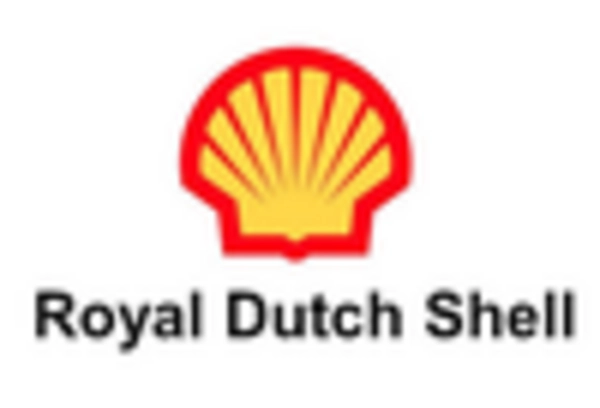Rising Domestic Production
The natural gas-liquid market is experiencing a notable increase in domestic production, driven by advancements in extraction technologies and the proliferation of shale gas resources. As of 2025, the U.S. is projected to produce approximately 100 Bcf/d of natural gas, with a significant portion being converted into natural gas liquids (NGLs). This surge in production is likely to enhance the availability of NGLs, thereby influencing market dynamics. The increased supply may lead to competitive pricing, which could stimulate demand across various sectors, including petrochemicals and energy. Furthermore, the natural gas-liquid market is expected to benefit from the growing infrastructure for processing and transporting these liquids, facilitating broader market access and integration.
International Trade Dynamics
The natural gas-liquid market is significantly impacted by international trade dynamics, particularly as the U.S. emerges as a leading exporter of NGLs. In 2025, exports of natural gas liquids are projected to reach approximately 1 million barrels per day, driven by increasing demand from international markets, especially in Asia and Europe. This trend is likely to enhance the competitiveness of the U.S. natural gas-liquid market, as companies seek to capitalize on favorable trade agreements and global demand fluctuations. However, the market may also face challenges related to tariffs and trade policies, which could influence pricing and availability. Overall, the interplay of domestic production and international trade is expected to shape the future landscape of the natural gas-liquid market.
Infrastructure Development Initiatives
Infrastructure development plays a crucial role in shaping the natural gas-liquid market. The U.S. government and private sector are investing heavily in expanding pipelines, storage facilities, and processing plants to accommodate the growing production of NGLs. As of 2025, it is estimated that over $10 billion will be allocated to enhance the infrastructure necessary for the efficient transportation and processing of natural gas liquids. This investment is likely to improve market accessibility and reduce bottlenecks, thereby fostering a more competitive environment. The natural gas-liquid market stands to benefit from these initiatives, as improved infrastructure can lead to lower operational costs and enhanced supply chain efficiency.
Environmental Regulations and Compliance
The natural gas-liquid market is increasingly influenced by environmental regulations aimed at reducing emissions and promoting cleaner energy sources. In 2025, stricter regulations are expected to be implemented, requiring companies in the natural gas-liquid market to adopt more sustainable practices. Compliance with these regulations may necessitate investments in cleaner technologies and processes, potentially increasing operational costs. However, this shift could also drive innovation and lead to the development of more efficient extraction and processing methods. As companies adapt to these regulatory changes, the natural gas-liquid market may experience a transformation that aligns with broader environmental goals, potentially enhancing its long-term viability.
Growing Demand from Petrochemical Sector
The natural gas-liquid market is witnessing a robust demand from the petrochemical sector, which utilizes NGLs as feedstock for producing essential chemicals and plastics. In 2025, the U.S. petrochemical industry is anticipated to consume around 1.5 million barrels per day of NGLs, reflecting a growth rate of approximately 5% annually. This increasing consumption is driven by the rising need for lightweight materials and sustainable products, which are integral to various industries, including automotive and packaging. The natural gas-liquid market is thus positioned to capitalize on this trend, as the demand for NGLs continues to expand, potentially leading to increased investments in processing facilities and infrastructure.

















Leave a Comment